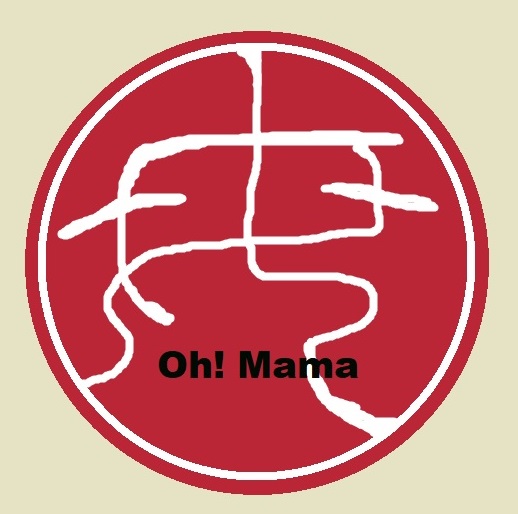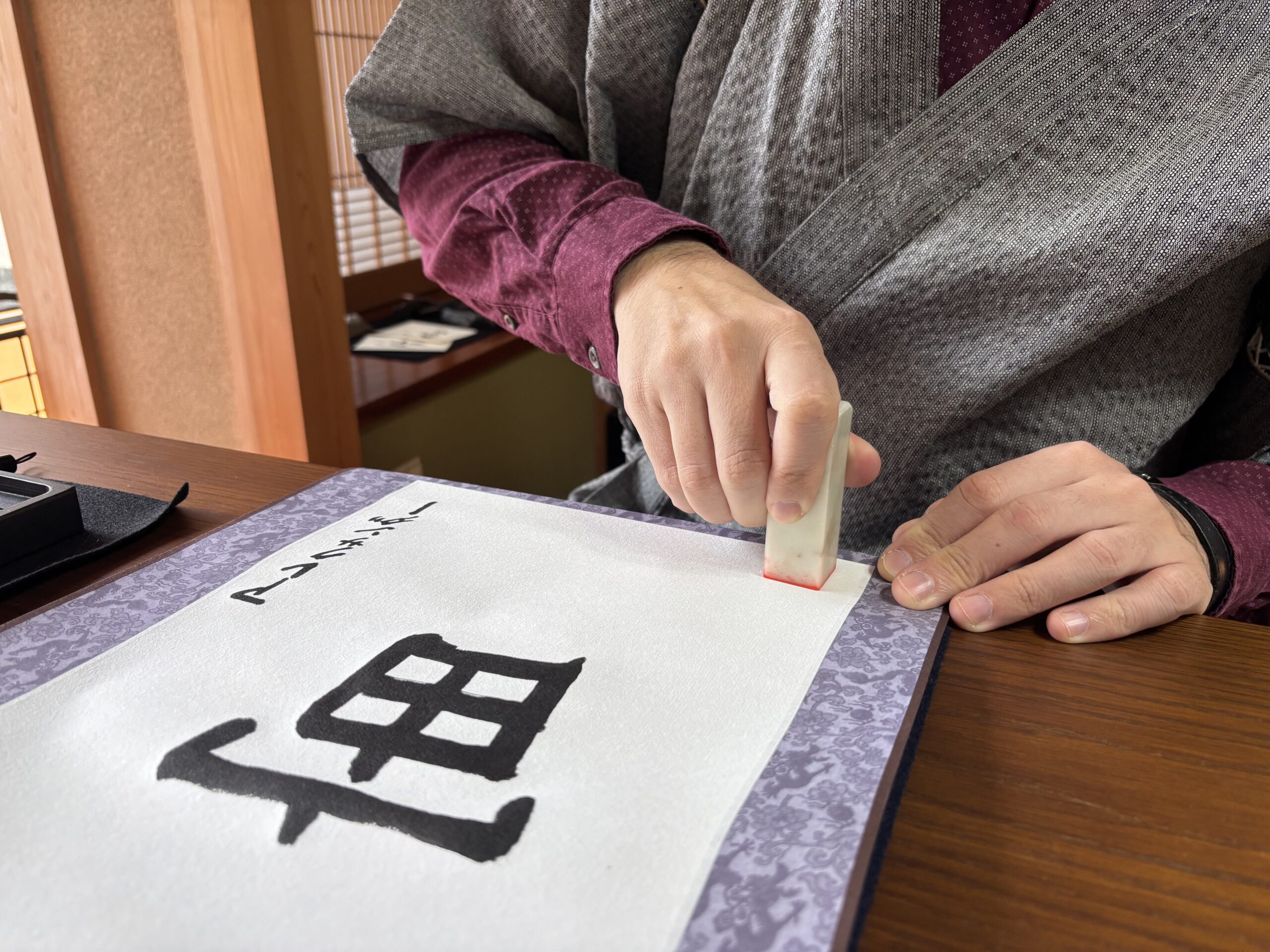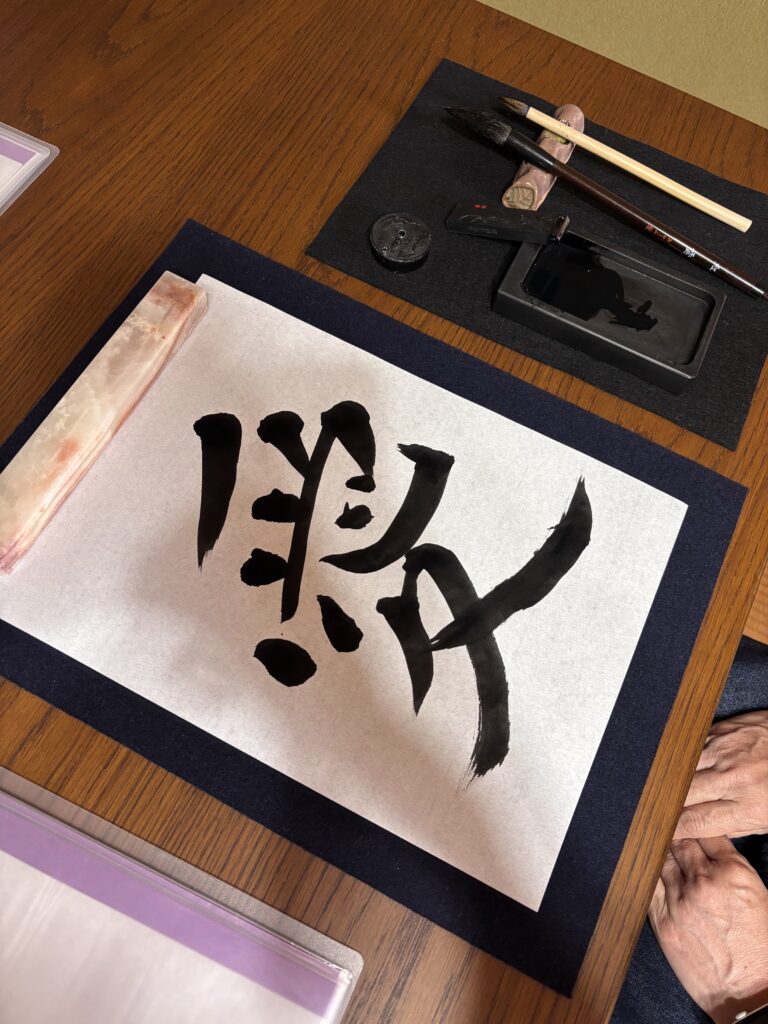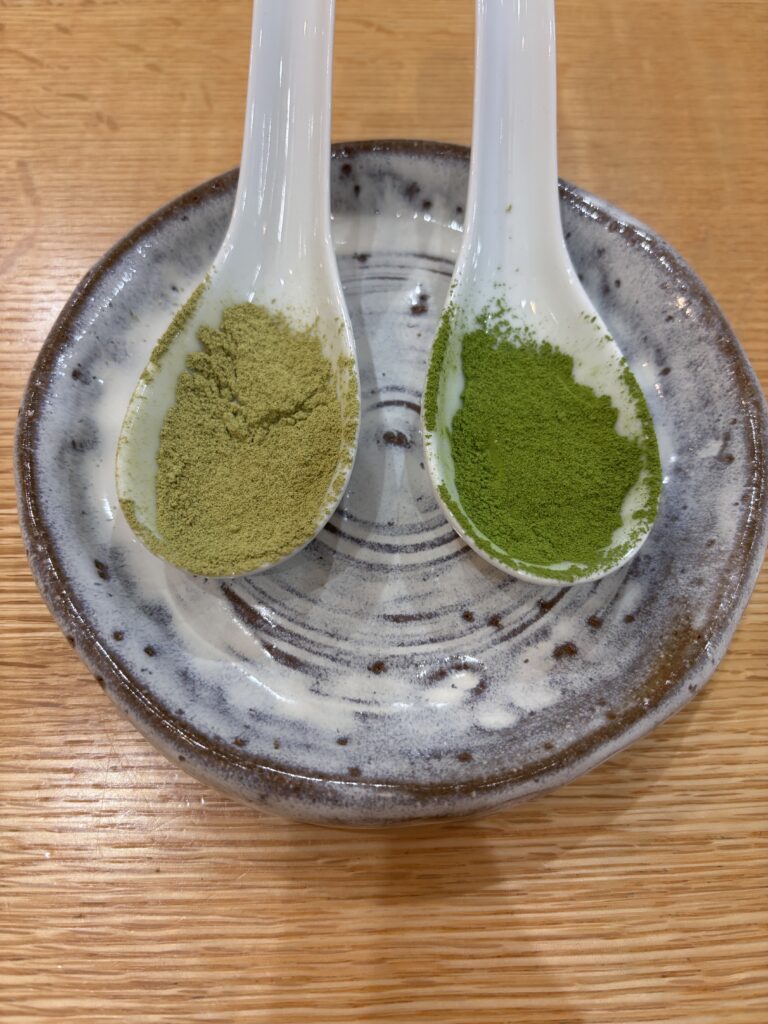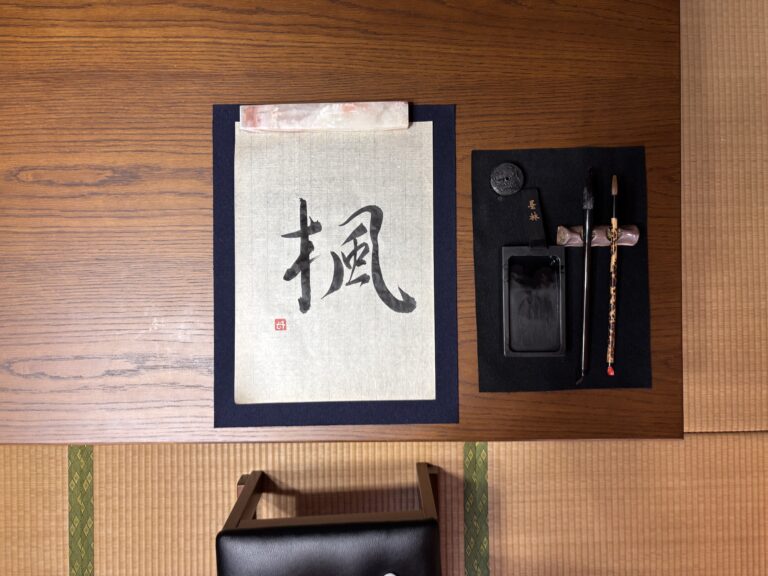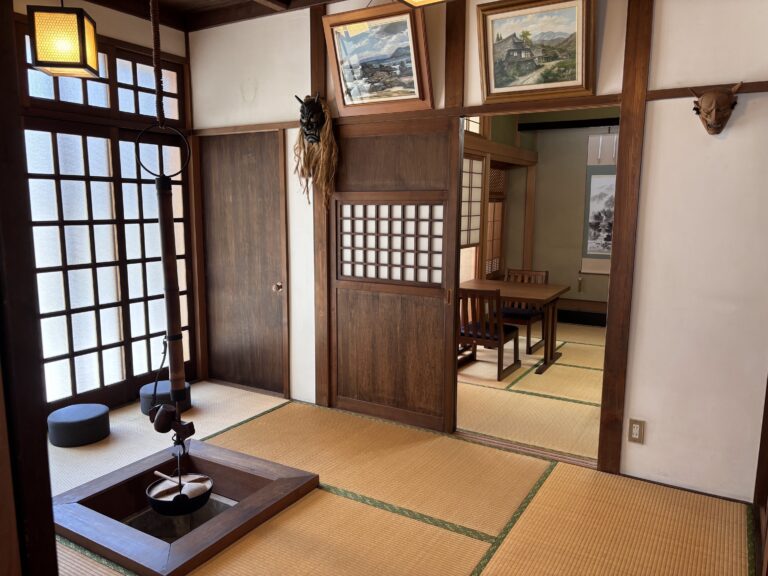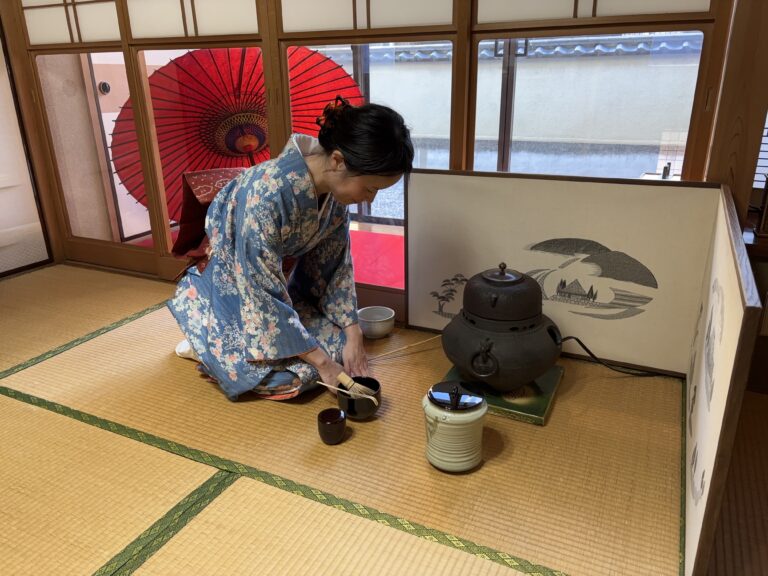Questions about Shodo, Japanese Calligraphy: Do Japanese People Love Hanko?
When guests join our shodo (Japanese calligraphy) experience, they first choose a kanji character they like. Each kanji has not only a beautiful shape but also one or more meaning.
Then, they write their names in Japanese — and finally, they add a hanko, a red seal.
It’s optional, but honestly, everyone ends up stamping it! The touch of red ink brings life and balance to the black-and-white composition, making it look complete.
The Final Touch — The Seal in Shodo
Every shodo artwork has a red seal called rakkan.
Some seals show the artist’s name, others a pen name, or even a favorite word.
After finishing the calligraphy, the artist presses the seal — that moment feels like saying,
“Now, it’s done!”
The hanko is not just decoration; it’s a symbol of completion and pride.
Japan’s Love for Hanko
Japanese people truly love hanko.
Have you ever heard of a stamp rally? It’s an activity where you walk around a certain area collecting stamps placed at various spots.
In Tokyo, you’ll find stamp rallies almost everywhere on weekends — at train stations, shopping malls, or parks. If you collect all the stamps, you might receive a small gift such as a badge or sticker. Sometimes there’s no prize at all — people simply enjoy the fun of collecting.
My eight-year-old child can’t resist them! Whenever we find a stamp rally, he grabs the free sheet of paper and presses the stamp with excitement. Once you press one stamp, you can’t help wanting to find the next one.
By the way, there’s even something called the Japan Stamp Rally Association!
The Oldest Seal in Japan — The “Golden Seal”
Japan even has a national treasure that’s a hanko!
It’s called the “Golden Seal,” inscribed with five Chinese characters: 「漢委奴国王」.
This seal is made of 95% pure gold and is believed to have been presented to Japan by the ancient Chinese emperor about 2,000 years ago. It is also one of the oldest existing inscriptions found in Japan.
You can see it at the Fukuoka City Museum.
Hanko and Paper — The Office Days
bout a decade or two ago, when I worked at a city office, hanko were everywhere. We used them for approvals, vacation requests, official documents, and contracts. Paper and seals were inseparable parts of daily work.
When I bought my house, I needed to register my personal seal — called jitsuin — at city hall. This special seal is often custom-made from fine wood, horn, or metal, and officially registered to prove ownership. Without it, you can’t sign major contracts such as for buying a home.
Even today, people still use hanko when opening a bank account. Though a handwritten signature is fine now, many people use hanko receiving a package.
The Joy of Stamping
Japanese people have long been close to hanko. It’s part of our daily life, our history, and our art.
When you complete your shodo piece, try pressing a red seal at the end. You’ll see how that single touch transforms your work into something truly special.
